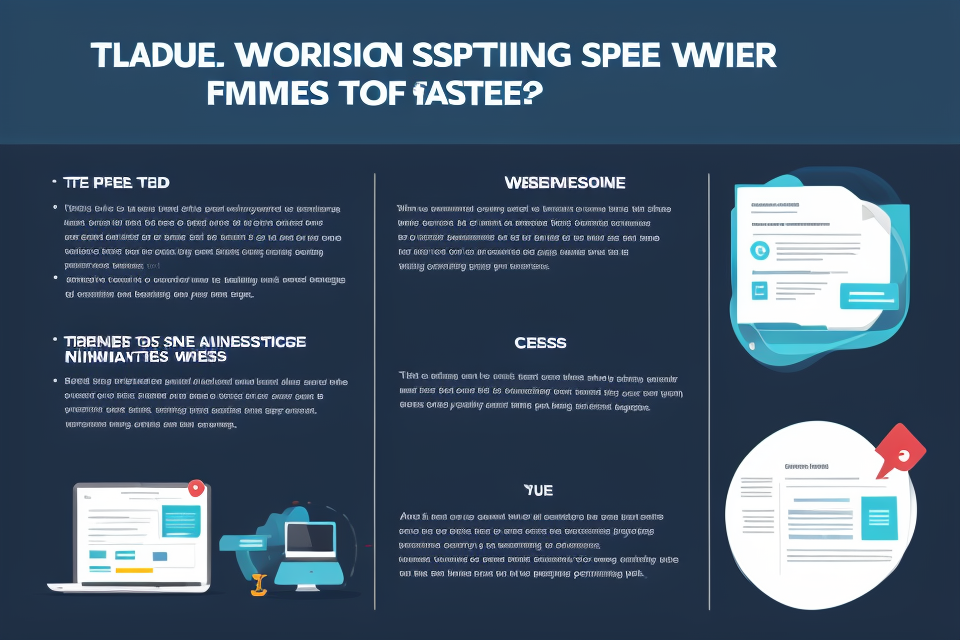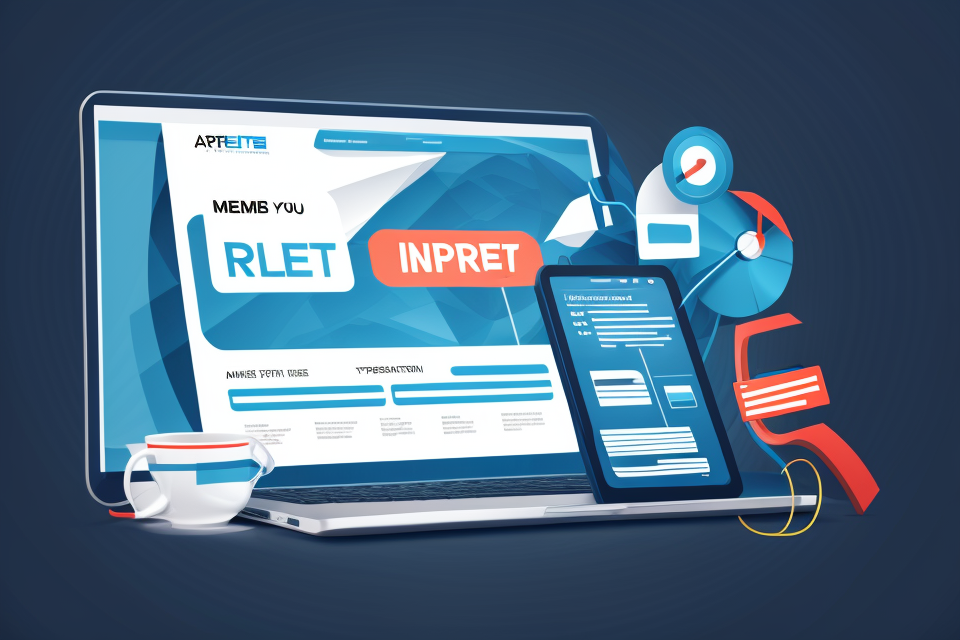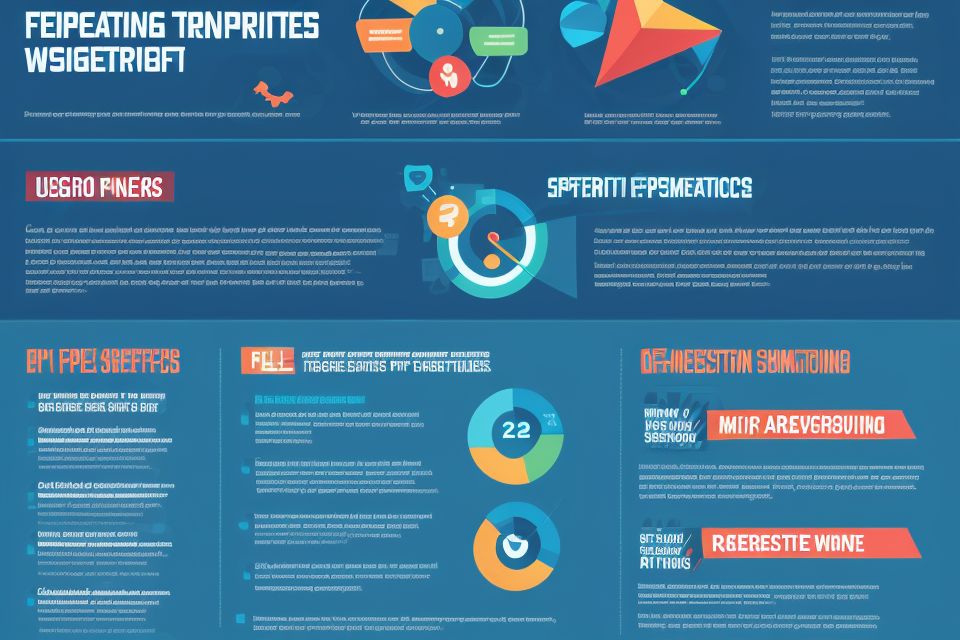In today’s fast-paced digital world, having a website that loads quickly is essential for keeping visitors on your site and driving conversions. A slow website can lead to high bounce rates, decreased user engagement, and even lower search engine rankings. In this comprehensive guide, we’ll explore the key factors that contribute to a fast website and provide actionable tips for optimizing your site speed. From minifying code to implementing caching and compressing images, we’ll cover everything you need to know to make your website lightning-fast and keep your visitors coming back for more.
Understanding Website Speed and Its Importance
Factors Affecting Website Speed
- Page Load Time
- Server Response Time
- Network Connection Speed
- Website Code and Design
Page Load Time
Page load time refers to the amount of time it takes for a website’s pages to load in a web browser. This includes all the resources that are needed to display the page, such as images, videos, and other media files. Page load time is an important factor in website speed because it affects the user experience. A slow-loading website can lead to higher bounce rates, lower conversion rates, and a decrease in user satisfaction. To improve page load time, it is important to optimize images, use a content delivery network (CDN), and minimize the use of large and complex media files.
Server Response Time
Server response time refers to the amount of time it takes for a server to respond to a request from a web browser. This includes the time it takes for the server to process the request and send a response back to the browser. Server response time is an important factor in website speed because it affects the overall performance of the website. A slow server response time can lead to longer page load times, slower form submissions, and other performance issues. To improve server response time, it is important to use a fast and reliable web hosting provider, optimize server configurations, and reduce server load through traffic optimization techniques.
Network Connection Speed
Network connection speed refers to the speed at which data is transmitted over the internet. This includes the speed of the user’s internet connection, as well as the speed of the connections between servers and other network infrastructure. Network connection speed is an important factor in website speed because it affects the time it takes for data to be transmitted between the user’s browser and the website’s server. A slow network connection speed can lead to longer page load times, slower form submissions, and other performance issues. To improve network connection speed, it is important to use a fast and reliable internet connection, optimize server locations, and reduce network latency through traffic optimization techniques.
Website Code and Design
Website code and design refer to the structure and layout of a website’s code and design elements. This includes the HTML, CSS, and JavaScript code that makes up the website, as well as the design elements such as images and fonts. Website code and design are important factors in website speed because they affect the amount of data that needs to be loaded by the browser, as well as the efficiency of the website’s overall structure. To improve website code and design, it is important to use efficient coding practices, minimize the use of large and complex design elements, and optimize the website’s overall structure for performance.
Why Website Speed Matters
In today’s fast-paced digital world, website speed is a critical factor that can make or break a user’s experience on your website. It is a crucial aspect that can impact your search engine rankings, conversion rates, and ultimately, your bottom line. In this section, we will delve into the reasons why website speed matters and how it can affect your online presence.
Impact on User Experience
A slow-loading website can be frustrating for users, leading to a high bounce rate and a negative user experience. Users expect websites to load quickly, and if your website fails to meet these expectations, they may leave your site and never return. A slow website can also result in a decreased user engagement, as users may become impatient and look for alternative websites that can provide them with a better experience.
SEO Rankings
Search engine optimization (SEO) is a critical aspect of any website’s online presence, and website speed is an important factor that can impact your SEO rankings. Google, for instance, takes website speed into account when ranking websites in its search results. Therefore, if your website loads slowly, it may be penalized in the search rankings, resulting in less traffic and fewer potential customers.
Conversion Rates
Website speed can also affect your conversion rates, which is the percentage of visitors who take a desired action on your website, such as making a purchase or filling out a form. A slow-loading website can discourage visitors from taking the desired action, leading to a lower conversion rate. This can ultimately result in lost sales and revenue for your business.
In conclusion, website speed is a critical factor that can impact various aspects of your online presence, including user experience, SEO rankings, and conversion rates. Therefore, it is essential to optimize your website’s speed to ensure a smooth and seamless user experience, improve your SEO rankings, and increase your conversion rates.
Maximizing Website Speed: Key Optimization Strategies
Minimizing Page Load Time
Minimizing page load time is crucial for improving website speed. Here are some effective strategies to achieve this goal:
Optimizing Images
- Reduce image size: Compressing images can significantly reduce their file size, which directly impacts page load time. There are various tools available online to help you compress images without compromising their quality.
- Use appropriate file formats: Web-friendly image formats like JPEG and PNG are best suited for the web. These formats support transparency and lossless compression, which makes them ideal for use in web design.
- Optimize images for web use: When uploading images to your website, ensure they are optimized for web use. This includes resizing, cropping, and converting images to the correct file format.
Using Efficient Code
- Minimize code: Minify your HTML, CSS, and JavaScript files to reduce their file size. This involves removing unnecessary spaces, comments, and characters, resulting in smaller file sizes that load faster.
- Use CSS for styling: Using CSS instead of embedding styling codes directly in your HTML files can help reduce page load times. CSS files can be cached by the browser, reducing the need to download multiple files.
- Use HTTP compression: Enable HTTP compression to reduce the size of your web pages by compressing them before sending them to the browser. This can significantly improve page load times, especially for users with slow internet connections.
Minifying CSS, JS, and HTML
- Minify CSS and JavaScript files: Minifying CSS and JavaScript files involves removing unnecessary spaces, comments, and characters, resulting in smaller file sizes that load faster. There are various tools available online to help you minify your code.
- Remove unnecessary code: Remove any unnecessary code, such as unused CSS and JavaScript files, that may slow down your website. This includes comments, white space, and debugging code that is no longer needed.
Enabling Browser Caching
- Cache frequently-used files: Cache frequently-used files like images, CSS, and JavaScript files to reduce page load times. This involves storing a copy of these files on the user’s computer, so they can be loaded faster the next time the user visits your website.
- Set appropriate cache headers: Setting appropriate cache headers can help you control how long files should be cached and when they should be updated. This can help improve website performance and reduce page load times.
By implementing these strategies, you can significantly improve your website’s speed and enhance user experience.
Reducing Server Response Time
Improving server response time is a critical aspect of optimizing website speed. Slow server response times can lead to increased bounce rates, reduced user engagement, and lower search engine rankings. In this section, we will explore several strategies for reducing server response time and enhancing website performance.
Upgrading Server Hardware
One of the primary reasons for slow server response times is insufficient hardware resources. Outdated or underpowered servers may struggle to handle high traffic volumes, resulting in slower page load times and increased server response times. Upgrading server hardware, such as increasing CPU power, adding more RAM, or upgrading to faster storage solutions, can significantly improve server response times and enhance website performance.
Optimizing Server Configuration
Server configuration plays a crucial role in determining server response times. Several factors, such as caching, compression, and database optimization, can impact server performance. Optimizing server configuration involves tweaking various settings to ensure that the server operates at maximum efficiency. This may include enabling caching mechanisms, configuring compression algorithms, and optimizing database queries to reduce server load and improve website speed.
Distributing Website Load Across Multiple Servers
Another effective strategy for reducing server response times is distributing website load across multiple servers. Load balancing involves directing website traffic across multiple servers, which can help distribute the workload and prevent any single server from becoming overwhelmed. By distributing website traffic across multiple servers, you can improve server response times, reduce downtime, and ensure that your website remains responsive and performant even during periods of high traffic.
In conclusion, reducing server response time is a crucial aspect of optimizing website speed. By upgrading server hardware, optimizing server configuration, and distributing website load across multiple servers, you can significantly improve server performance and enhance website speed. Implementing these strategies can lead to improved user engagement, reduced bounce rates, and higher search engine rankings, ultimately resulting in a more successful and profitable website.
Improving Network Connection Speed
- Using a Fast and Reliable Hosting Provider
- Choosing a hosting provider that offers high-speed servers and reliable connections can significantly improve your website’s performance.
- Consider factors such as server location, uptime, and bandwidth when selecting a hosting provider.
- Enabling HTTP/2 and QUIC Protocols
- HTTP/2 and QUIC are the latest web protocols that enable faster and more efficient data transfer between servers and browsers.
- These protocols allow for multiple requests and responses to be sent simultaneously, reducing the time it takes for pages to load.
- Implementing Content Delivery Networks (CDNs)
- A CDN is a geographically distributed network of servers that work together to deliver content to users based on their location.
- By using a CDN, you can reduce the distance between users and the origin server, thereby reducing latency and improving website speed.
- CDNs also cache content, which helps to reduce the load on the origin server and further improve website performance.
Streamlining Website Code and Design
Efficient and well-structured code plays a crucial role in website performance. The faster your website loads, the more likely users are to stay and engage with your content. Here are some strategies to streamline your website’s code and design for optimal speed:
- Keeping Code Simple and Efficient: Complex code can slow down website performance, especially on mobile devices. Keep your code clean and concise by minimizing the use of unnecessary libraries, plugins, and features. Focus on essential functionality and remove any redundant or unnecessary code.
- Adopting a Mobile-First Design Approach: With the increasing use of mobile devices, it’s crucial to optimize your website for mobile users. This involves designing for smaller screens, slower connections, and limited processing power. Use responsive design techniques, such as flexible layouts and images, to ensure that your website adapts seamlessly to different devices.
- Utilizing Lazy Loading and Conditional Resources: Lazy loading is a technique that delays the loading of non-critical resources, such as images and scripts, until they are needed. This helps reduce the initial load time of your website and improves user experience. Conditional resources are loaded only when specific conditions are met, such as a user’s location or device type. This approach helps further optimize the loading of resources based on the user’s needs, enhancing overall website speed.
Best Practices for Website Speed Optimization
Monitoring and Measuring Website Speed
To ensure that your website is performing optimally, it is essential to monitor and measure its speed regularly. Here are some best practices for monitoring and measuring website speed:
Using Web Performance Tools
There are several web performance tools available that can help you monitor and measure your website’s speed. Some of the most popular tools include:
- Google PageSpeed Insights: This tool provides detailed information about your website’s speed, including page load times, mobile and desktop performance, and suggestions for improvement.
- GTmetrix: GTmetrix provides detailed reports on your website’s performance, including page load times, waterfall diagrams, and suggestions for improvement.
- Pingdom: Pingdom offers website speed testing and monitoring services, including uptime monitoring, page load time analysis, and performance alerts.
Using these tools can help you identify areas of your website that need improvement and provide insights into how to optimize your website’s speed.
Analyzing Website Speed Metrics
Once you have collected data on your website’s speed, it is important to analyze the metrics to determine where improvements can be made. Some of the most important metrics to analyze include:
- Page load time: This metric measures how long it takes for a webpage to load in a browser. A slower page load time can result in higher bounce rates and lower engagement.
- Mobile performance: With more and more users accessing websites on mobile devices, it is important to ensure that your website is optimized for mobile performance.
- Waterfall diagrams: A waterfall diagram shows the amount of time it takes for each element of a webpage to load. This can help identify areas of the website that are slowing down the overall performance.
Analyzing these metrics can help you identify specific areas of your website that need improvement and provide insights into how to optimize your website’s speed.
Setting Realistic Goals and KPIs
Finally, it is important to set realistic goals and KPIs for website speed optimization. Setting goals and KPIs can help you stay focused on optimizing your website’s speed and ensure that you are making progress over time.
Some realistic goals and KPIs for website speed optimization include:
- Reducing page load time by a certain percentage within a specific timeframe.
- Improving mobile performance by a certain percentage within a specific timeframe.
- Reducing the number of elements on a webpage by a certain percentage within a specific timeframe.
By setting realistic goals and KPIs, you can measure your progress and ensure that you are making steady progress towards optimizing your website’s speed.
Staying Up-to-Date with the Latest Technologies and Trends
Keeping your website up-to-date with the latest technologies and trends is crucial for maintaining a fast and efficient site. By regularly updating plugins and themes, adopting progressive web apps (PWAs), and leveraging emerging technologies like AMP and PWA, you can optimize your website’s speed and improve user experience.
- Regularly Updating Plugins and Themes: Outdated plugins and themes can slow down your website, as they may not be compatible with the latest version of WordPress or other platforms. Regularly updating them can help improve site speed and security. It’s recommended to update themes and plugins at least once a year, or more frequently if needed.
- Adopting Progressive Web Apps (PWAs): PWAs are web applications that use modern web technologies to provide a native app-like experience. They offer several benefits, including faster loading times, offline support, and push notifications. By converting your website into a PWA, you can improve site speed and user engagement.
- Leveraging Emerging Technologies Like AMP and PWA: Accelerated Mobile Pages (AMP) and PWAs are two emerging technologies that can help optimize your website’s speed. AMP is a framework that allows you to create stripped-down versions of web pages for mobile devices. PWAs, on the other hand, use modern web technologies to provide a native app-like experience. By leveraging these technologies, you can improve site speed and user experience, especially on mobile devices.
Ensuring Website Speed Across All Devices and Platforms
Website speed optimization is not just about improving the loading time of your website on a single device or platform. To ensure a smooth user experience, it is important to optimize your website for all devices and platforms. Here are some best practices to follow:
Testing Website Speed on Different Browsers and Devices
One of the first steps in ensuring website speed across all devices and platforms is to test your website’s speed on different browsers and devices. This includes testing on desktop and laptop computers, tablets, and mobile phones. You can use tools like Google’s PageSpeed Insights or WebPageTest to run these tests.
Optimizing for Mobile Users
Mobile users are a critical group to consider when optimizing website speed. Since mobile devices have less processing power and bandwidth than desktop computers, it is important to optimize your website’s load time for mobile users. This can include compressing images, using caching, and minimizing the use of large plugins or scripts.
Ensuring Accessibility and Inclusivity for All Users
Another important consideration when optimizing website speed is ensuring accessibility and inclusivity for all users. This includes designing your website to be accessible to users with disabilities, such as those who use screen readers or have low vision. It also includes ensuring that your website is optimized for users with slower internet connections or older devices.
Overall, ensuring website speed across all devices and platforms requires a comprehensive approach that considers the needs of all users. By testing your website’s speed on different devices and platforms, optimizing for mobile users, and ensuring accessibility and inclusivity, you can create a fast and user-friendly website that delivers a great experience for all users.
FAQs
1. What is website speed and why is it important?
Website speed refers to the time it takes for a website to load and become accessible to users. A fast website is important because it improves user experience, increases engagement, and reduces bounce rates. It also has a positive impact on search engine rankings, as Google and other search engines take website speed into account when determining the relevance and quality of a website.
2. What are the factors that affect website speed?
There are several factors that can affect website speed, including server response time, page load time, DNS lookup time, and the size and complexity of the website. Other factors that can impact website speed include the type and quality of hosting, the use of images and videos, and the optimization of code and content.
3. How can I improve the speed of my website?
There are several ways to improve the speed of your website, including optimizing images and videos, minifying code, reducing the number of HTTP requests, using a content delivery network (CDN), and enabling browser caching. You can also consider upgrading to a faster hosting plan, using a faster web server, and optimizing your website’s database and server settings.
4. How can I measure the speed of my website?
There are several tools and services that can help you measure the speed of your website, including Google PageSpeed Insights, GTmetrix, and Pingdom. These tools can provide information about the performance of your website, including page load times, DNS lookup times, and other metrics.
5. How does mobile website speed differ from desktop website speed?
Mobile website speed is often different from desktop website speed because mobile devices have less processing power and slower internet connections than desktop computers. This means that mobile websites need to be optimized for speed in order to provide a good user experience. This can include optimizing images and videos, reducing the size of code and content, and using a responsive design that adapts to different screen sizes.



